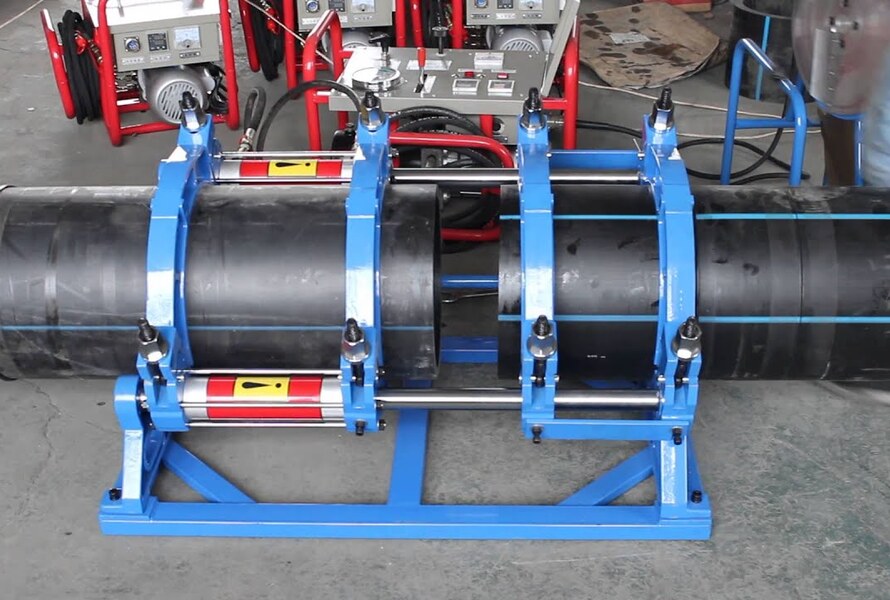The Best Guide To American Plastics
The Basic Principles Of American Plastics
Table of ContentsThe Definitive Guide for American PlasticsHow American Plastics can Save You Time, Stress, and Money.Getting My American Plastics To WorkHow American Plastics can Save You Time, Stress, and Money.See This Report on American Plastics
This factor to consider is particularly crucial for applications that involve high-pressure liquids. The range and range of the project also play a substantial function in size option. Bigger jobs may need pipelines with higher diameters to efficiently disperse fluids over cross countries. In addition, aspects such as surface trouble, the capacity for ecological stress, and the setup environment should influence the pipe size to make certain an effective, long-term application.
Involve with expert guidance to validate your selection and adapt as required for optimal results. Armed with this knowledge and the actionable actions detailed, you are fully equipped to make informed decisions when selecting HDPE pipe sizes for your jobs. Your attention to detail in this selection procedure will certainly go a long means in making certain the effectiveness, safety, and cost-effectiveness of your piping systems.
The Only Guide to American Plastics
Because HDPE is light-weight and chemically inert, it can manage liquid and gas transportation with marginal maintenance. HDPE pipelines are extensively taken on across a variety of sectors due to their adaptability and stamina. Among one of the most usual uses for HDPE pipe remains in supply of water systems. HDPE's deterioration resistance makes it optimal for both potable and non-potable water circulation, whether in metropolitan networks or personal systems.
: HDPE pipes are joined via warm combination, producing a smooth, uniform connection as strong as the pipeline itself. This watertight joint is vital in gas and water distribution, where leaks might bring about harmful circumstances or costly waste.: HDPE pipes are lighter than typical steel pipes, making them less complicated to transport and mount.
We have stockrooms in several areas to guarantee a quick feedback. You can obtain in-depth product details and prices quote through our official site, by phone, or by email. Our basic and fast buying procedure and effective logistics ensure you receive your 4-inch HDPE pipeline in the fastest feasible time. Our after-sales team is offered 24/7 to assist with any concerns you might run into, ensuring satisfaction.
PE 80 is for basic commercial applications like gas and water, while PE 100 offers long-term stamina and efficiency for tougher uses. For a succinct check out applications, below are several of one of the most common sorts of HDPE piping and their applications. Piping systems make use of PE 32 or PE 40 for low-pressure applications.
American Plastics Things To Know Before You Buy
PE 80 has a product immune to cracks, so it's suitable in applications vulnerable to splitting, like sewage systems and water distribution lines. PE 100 is likewise resistant to fractures, and 100 N/mm2 is the minimum needed stamina. As stated, categories of HDPE piping consist of nominal stress, product, and color coding.
Makers generate pipes with various stress grades (PN qualities). This reveals the stress in bars the pipe can sustain with water at 68 levels Fahrenheit. The pressure grades comply with European criteria, and they are: PN 2.5 max pressure 2.5 bar PN 4max pressure 4 bar PN 6max stress 6 bar PN 10max stress 10 bar PN 16max stress 16 bar The shade codes that indicate the pressure grade are yellow for PN4, red for PN6, blue for PN10, and environment-friendly for PN16.
The total list of sizes is comprehensive. Pipe vendors offer sizing overviews with additional information like wall thickness and mass. Quality control follows ISO requirements regulating the material style and minimum necessary stamina (MRS) of pipes. Typically, top quality assurance examinations inform the manufacturers if the HDPE pipelines can offer 50-plus years of solution under normal operating problems.
Industries take into consideration small pressure, material, and other elements when establishing which pipelines to make use of - custom hdpe pipe manufacturing Midland TX. Today, you'll see high-density polyethylene pipelines in water system, gas circulation, agriculture, and a lot more. Industries use PN 10 grade HDPE pipe for water supply and circulation networks. You'll click here for info commonly see it in multistory apartment building.
The 15-Second Trick For American Plastics

It deserves noting that gas calls for high tolerance to stress, making PN-16 to PN-2 quality pipelines appropriate for procedures. The agriculture sector uses HDPE pipes for irrigation and drain. On top of that, HDPE is relevant for sewage, mining, and the telecom industry. Thanks to piping, cities can take care of sewage and stormwater to prevent flooding.
Mining companies use pipelines for slurry transportation and dewatering. Lastly, HDPE piping can safeguard cable televisions in the telecom industry. This is beneficial for underground wires. The very best part is that businesses can make use of general PN class pipelines for this application. Industries select HDPE piping over traditional pipes because they use extra benefits.
For beginners, HDPE pipes are incredibly sturdy and can last a long time with marginal maintenance. HDPE pipelines are lighter than conventional pipelines for much better handling and transportation.
Some Of American Plastics
Whether you're a service provider, engineer, or do it yourself fanatic, this short article will give you with the expertise to make informed choices and attain optimum results. When it involves picking the appropriate HDPE pipeline for your task, comprehending the PSI ranking is of utmost relevance. The PSI rating determines the stamina and stress ability of the pipeline, indicating just how much stress it can hold up against without failure.
The PSI score of an HDPE pipeline identifies its ability to take care of different pressure levels. Pipes with higher PSI ratings can hold up against greater stress, making them ideal for applications that include higher fluid or gas pressures. On the other hand, pipes with reduced PSI ratings are ideal for low-pressure applications.